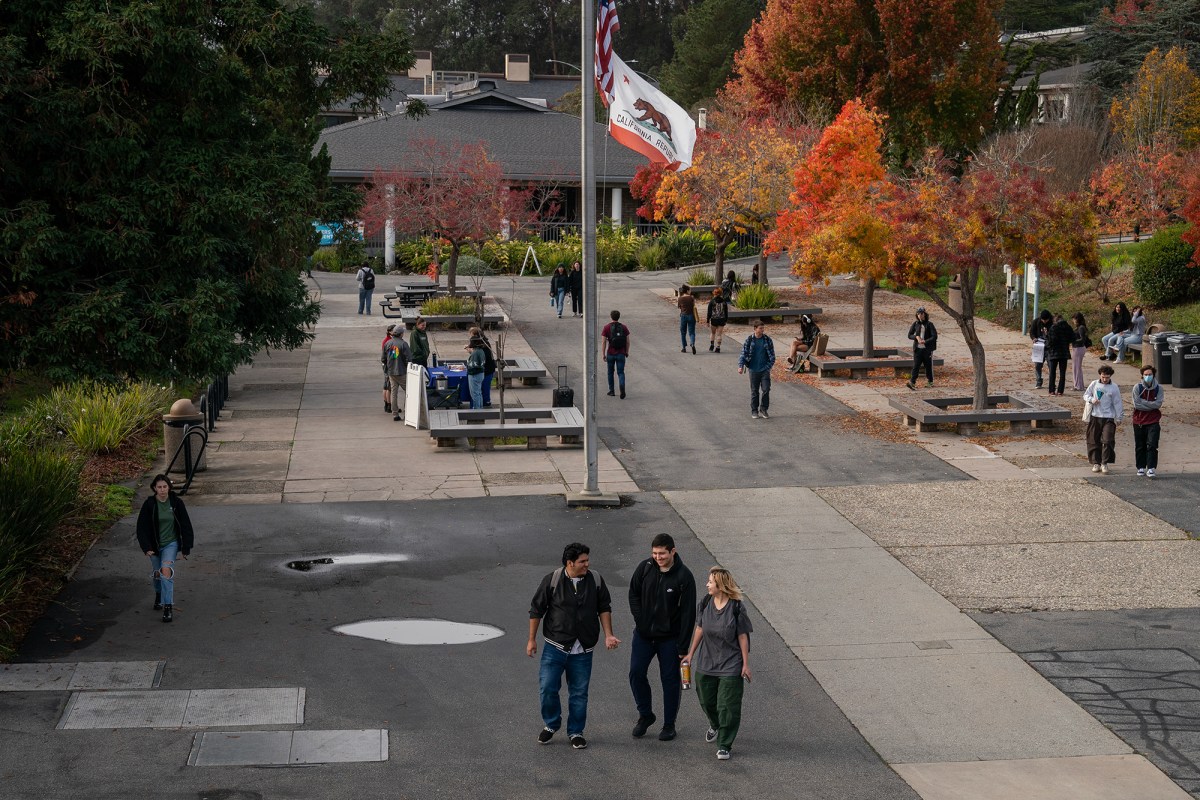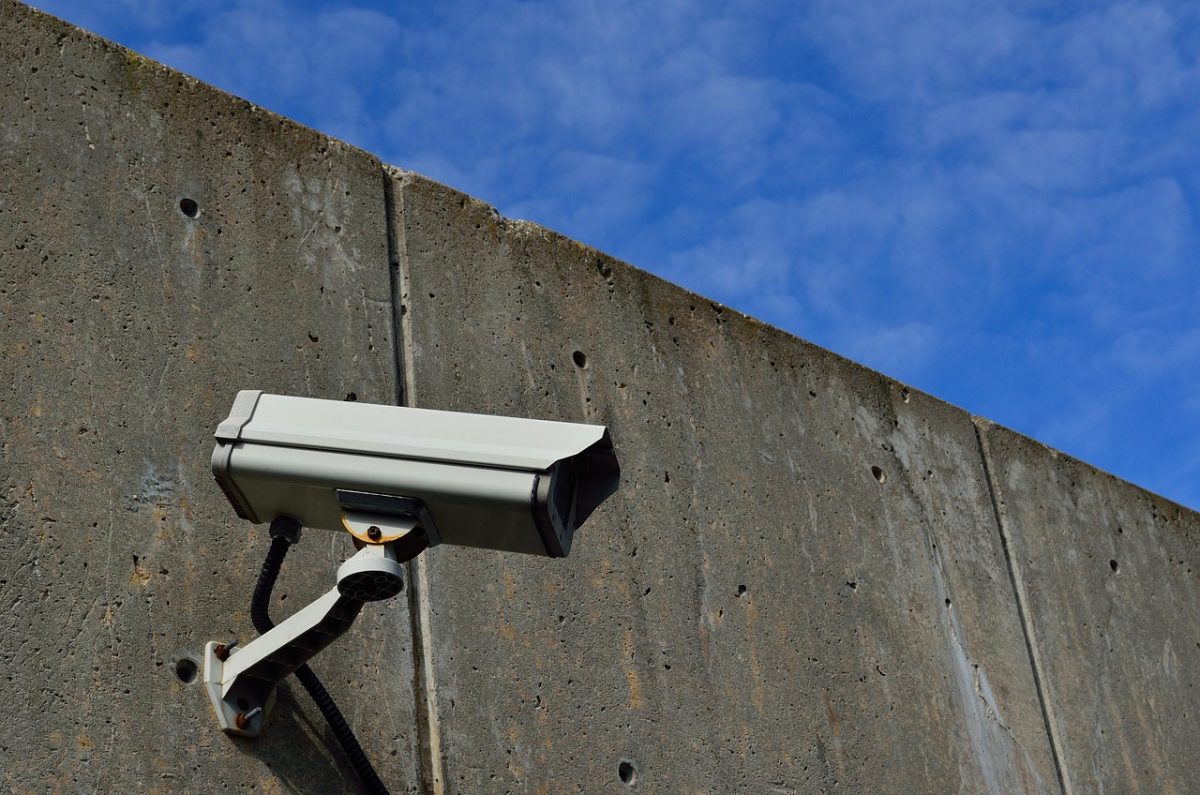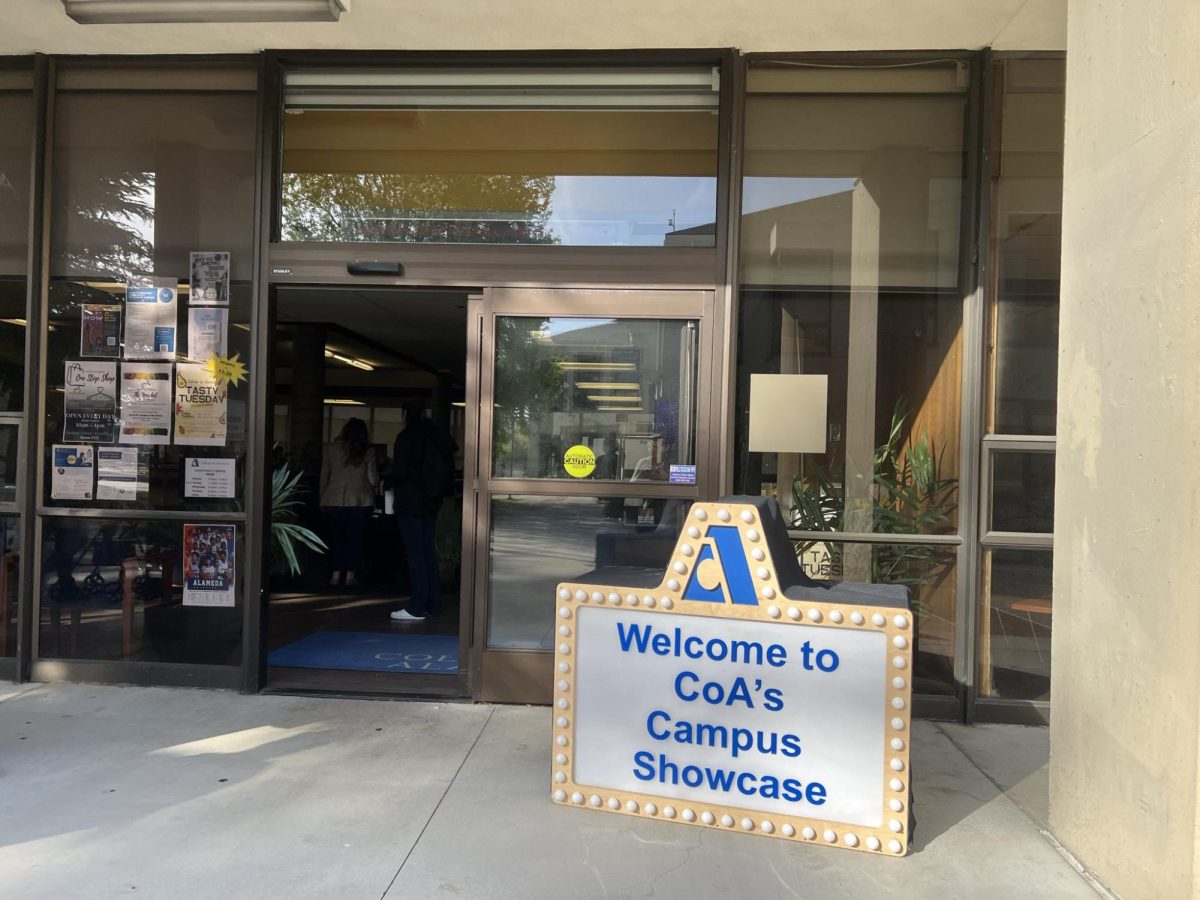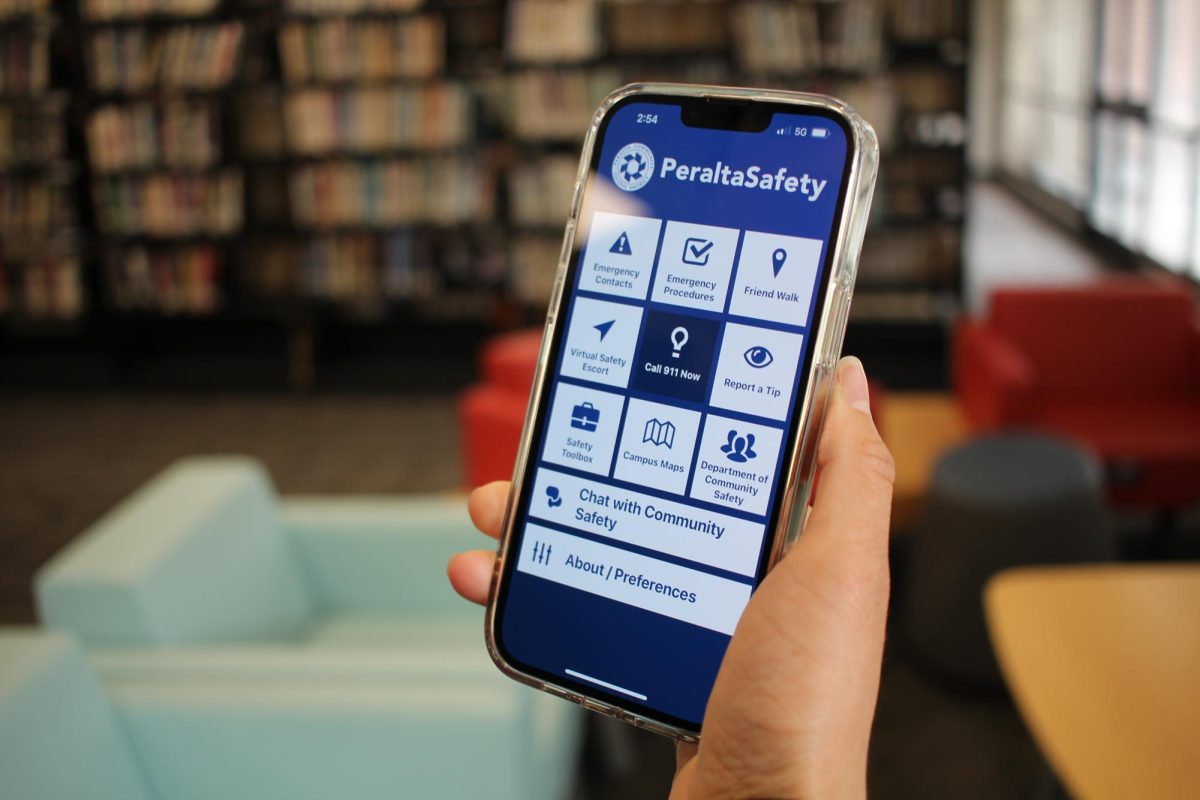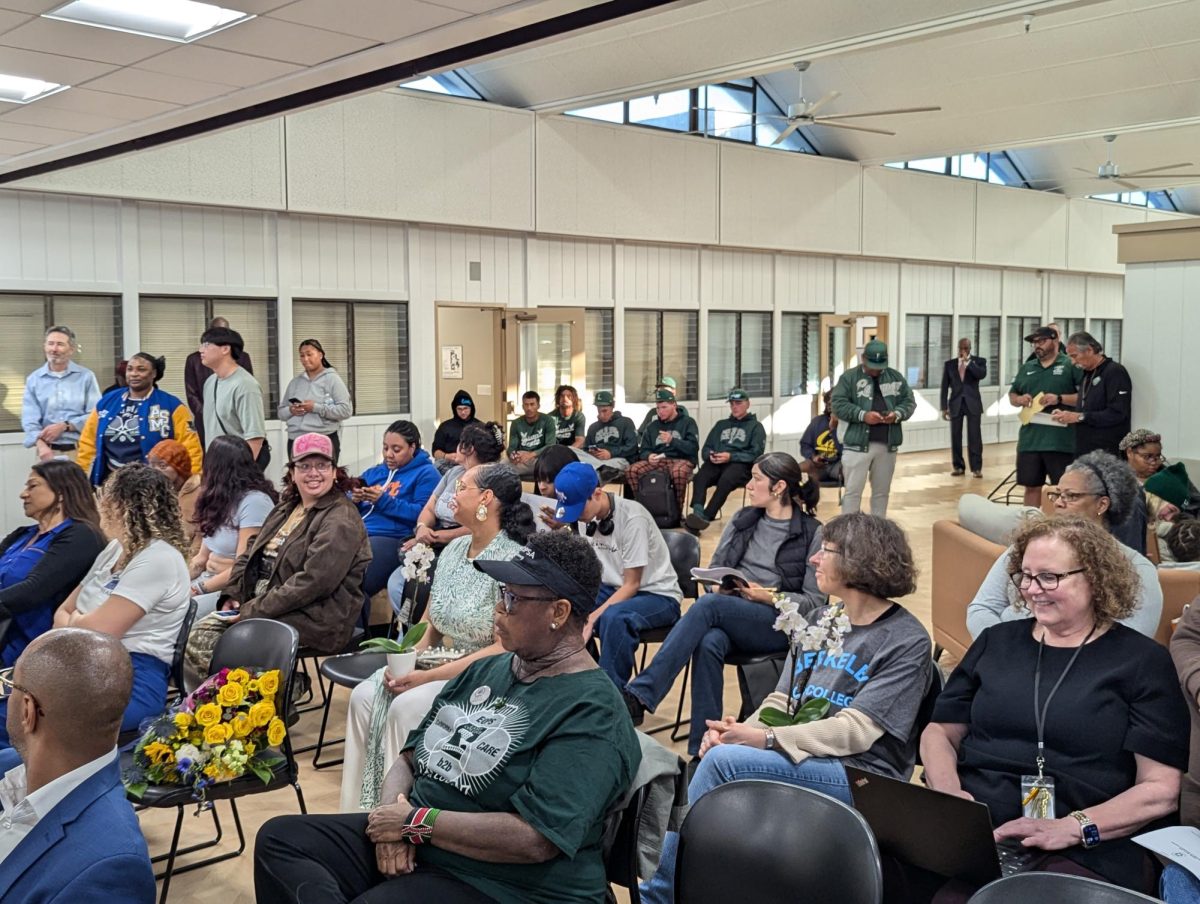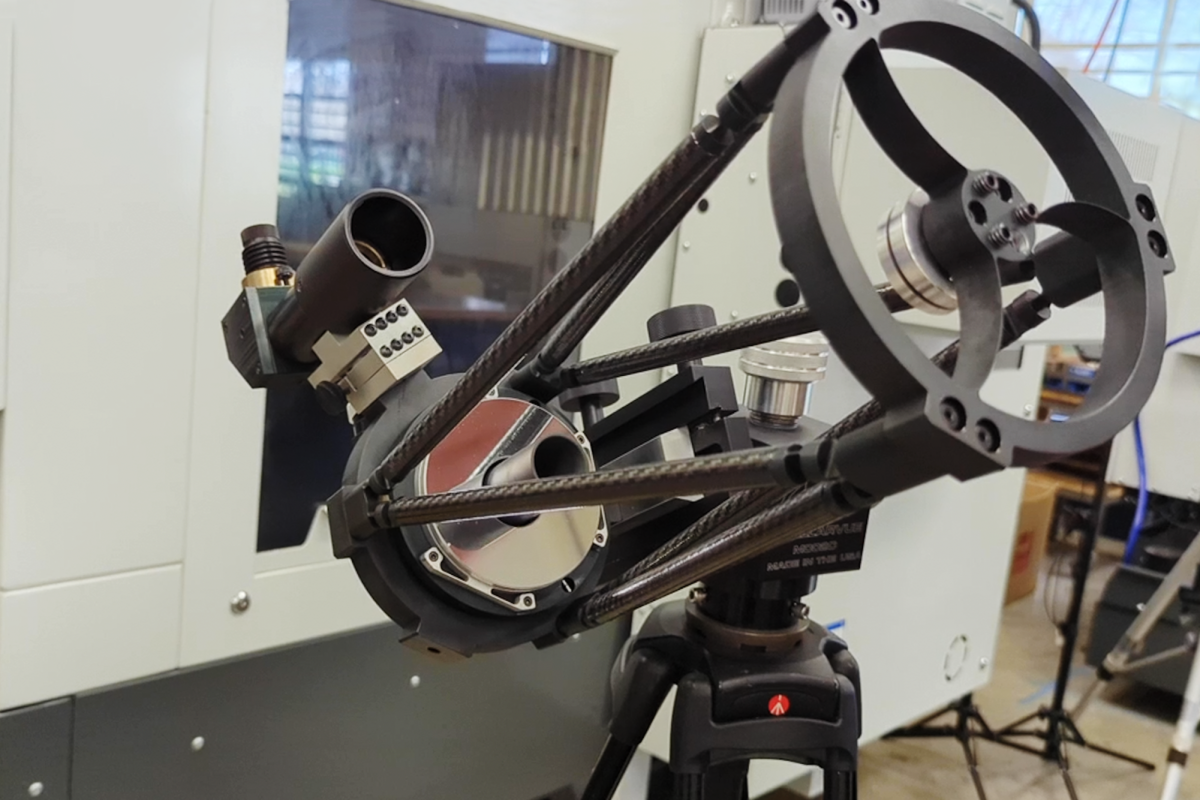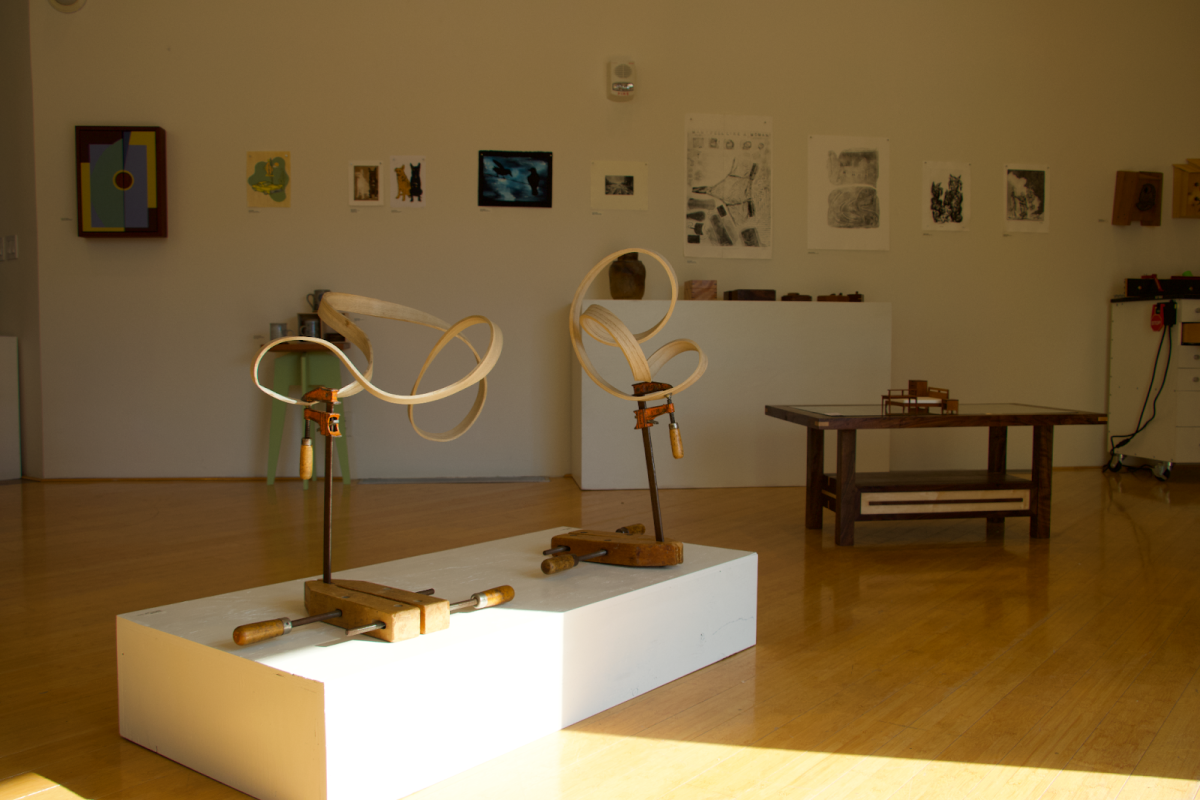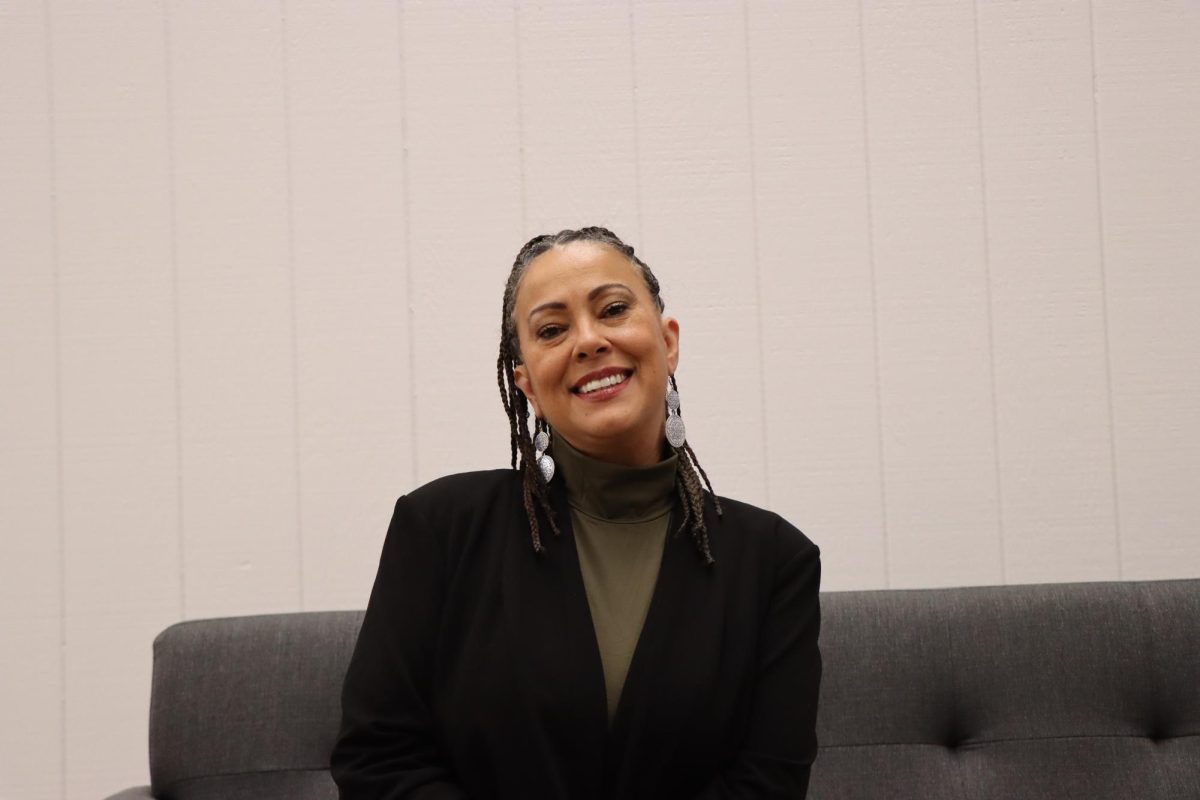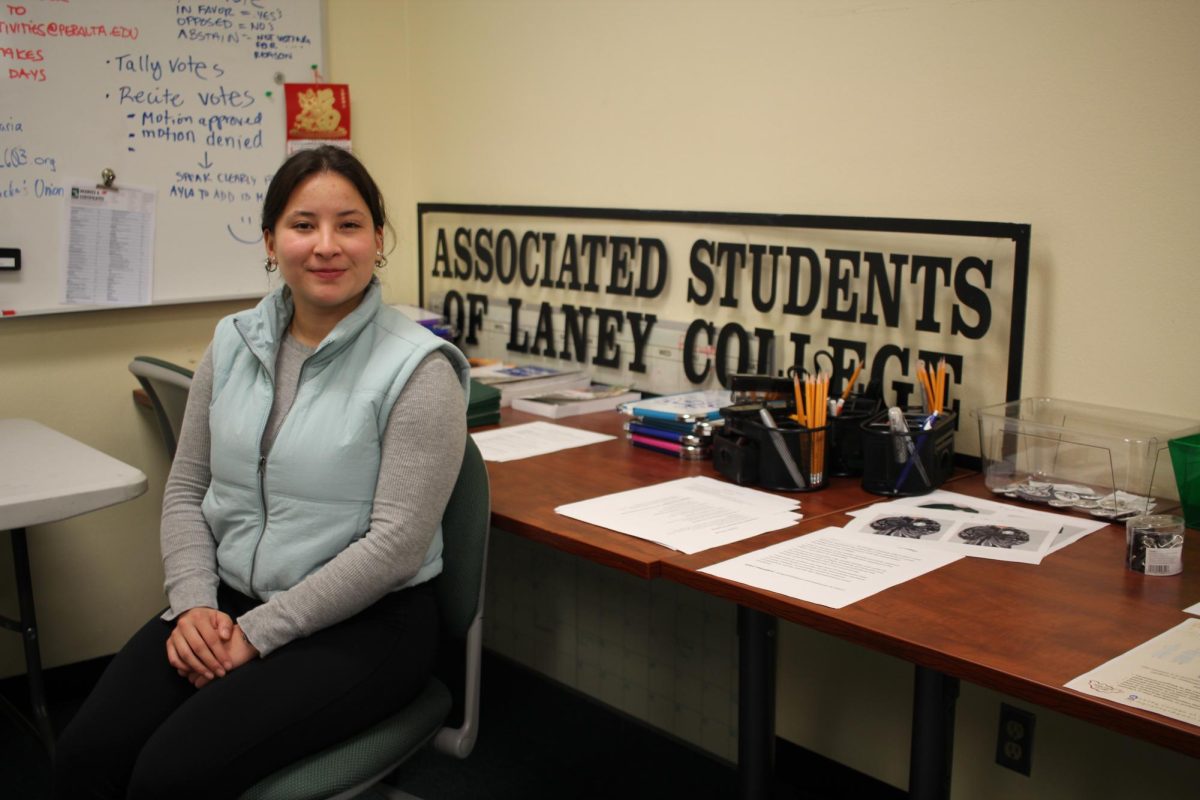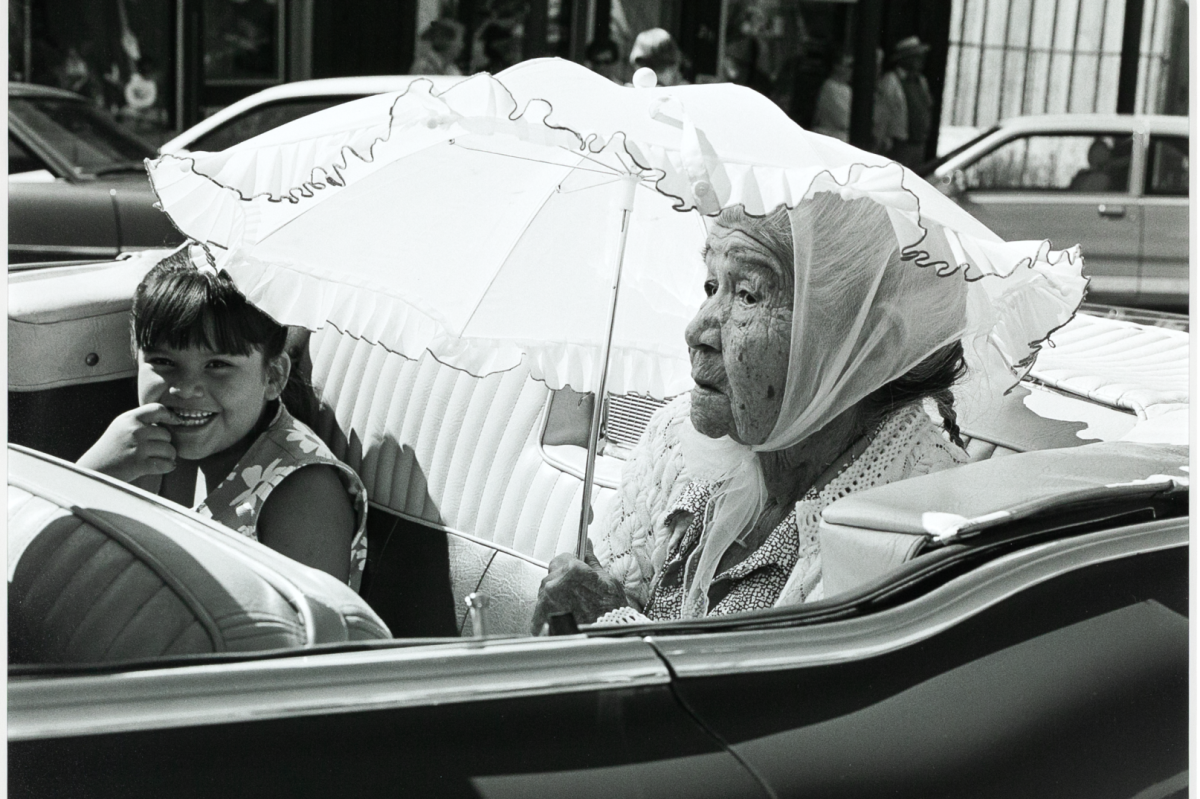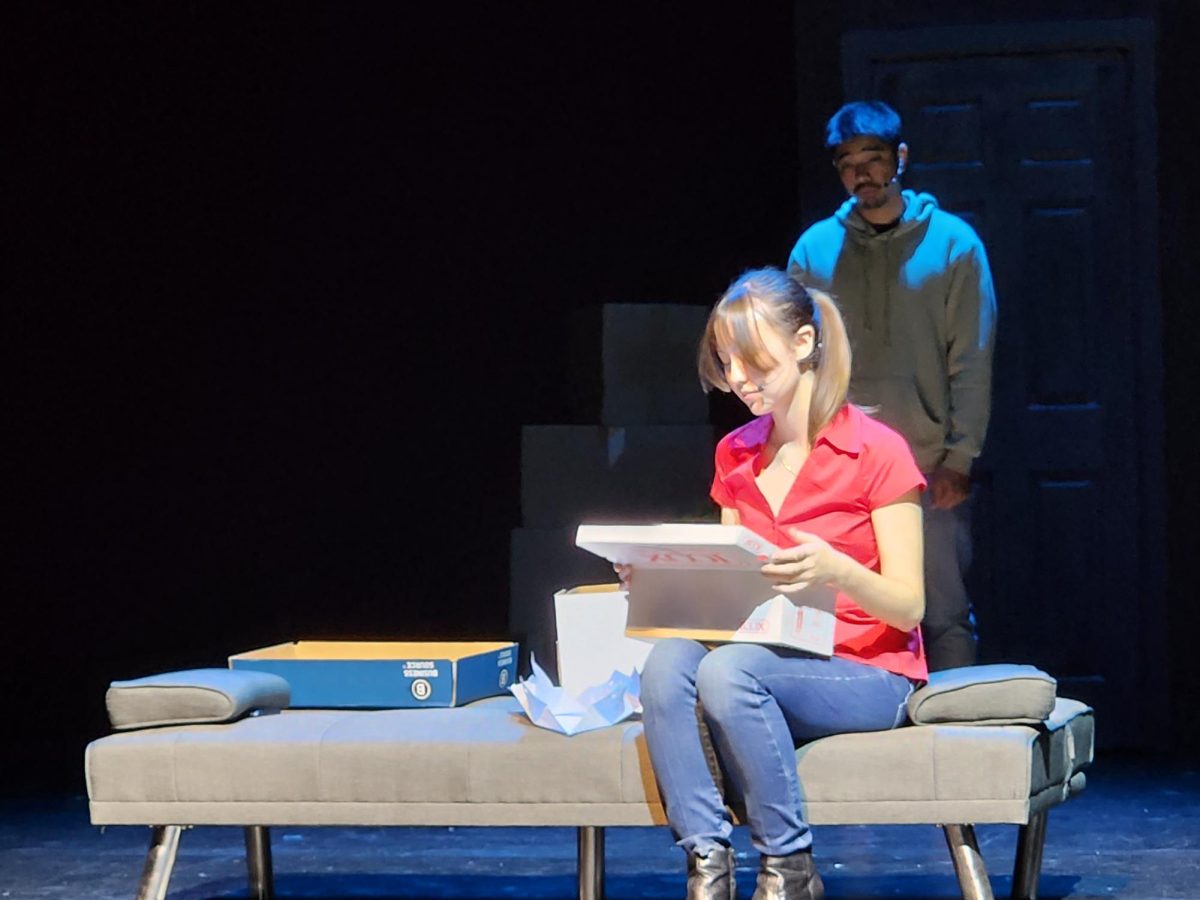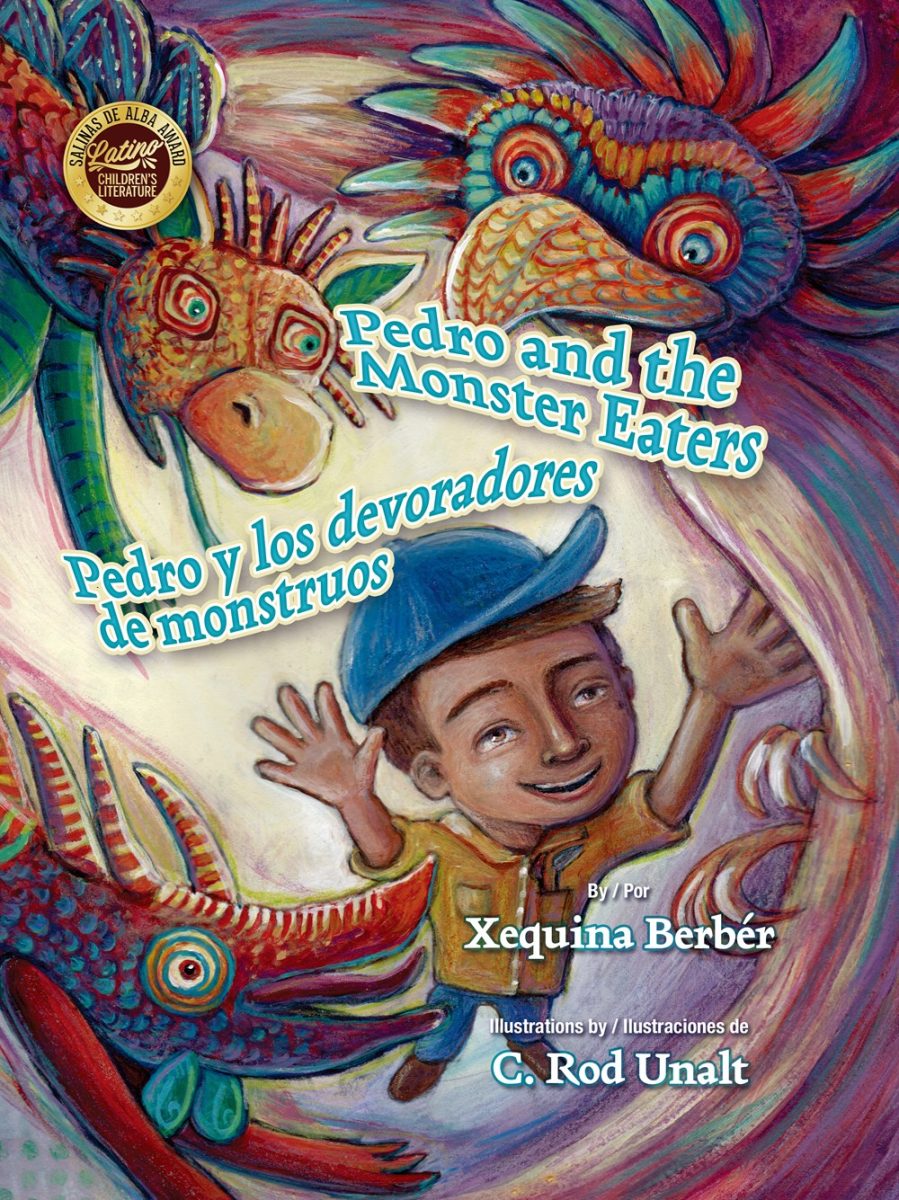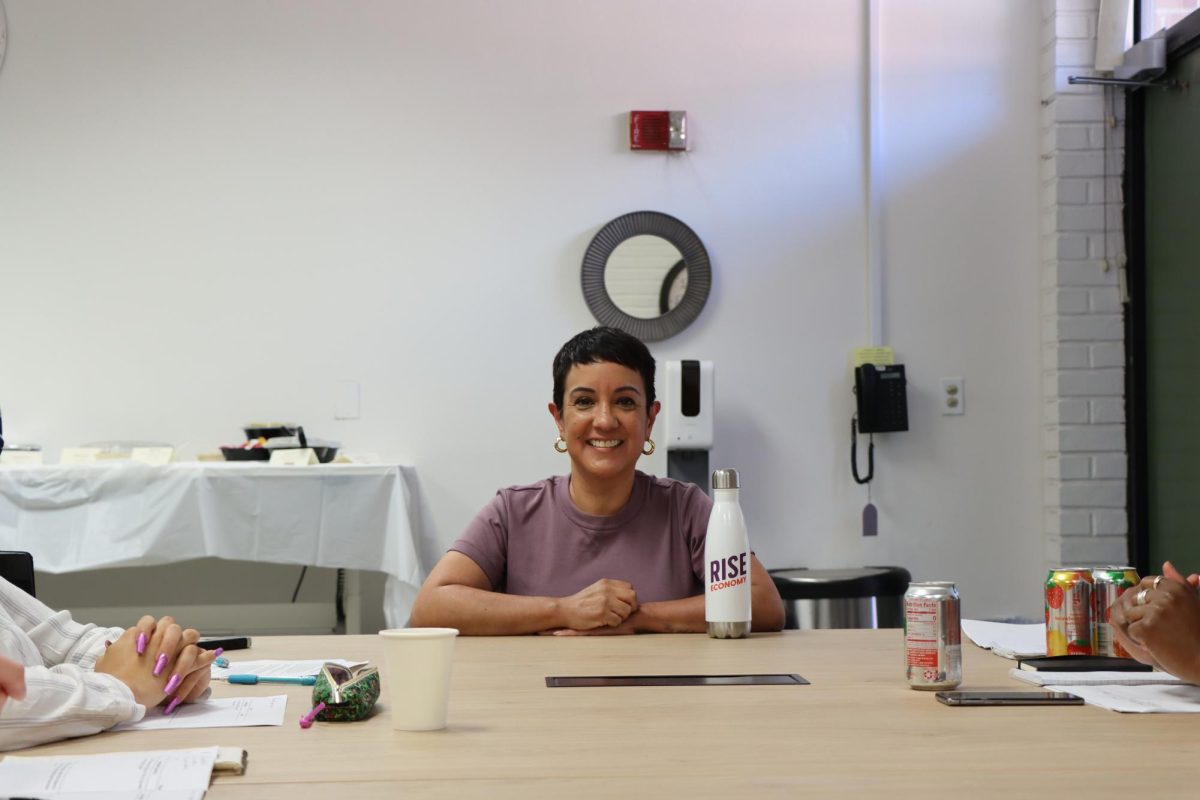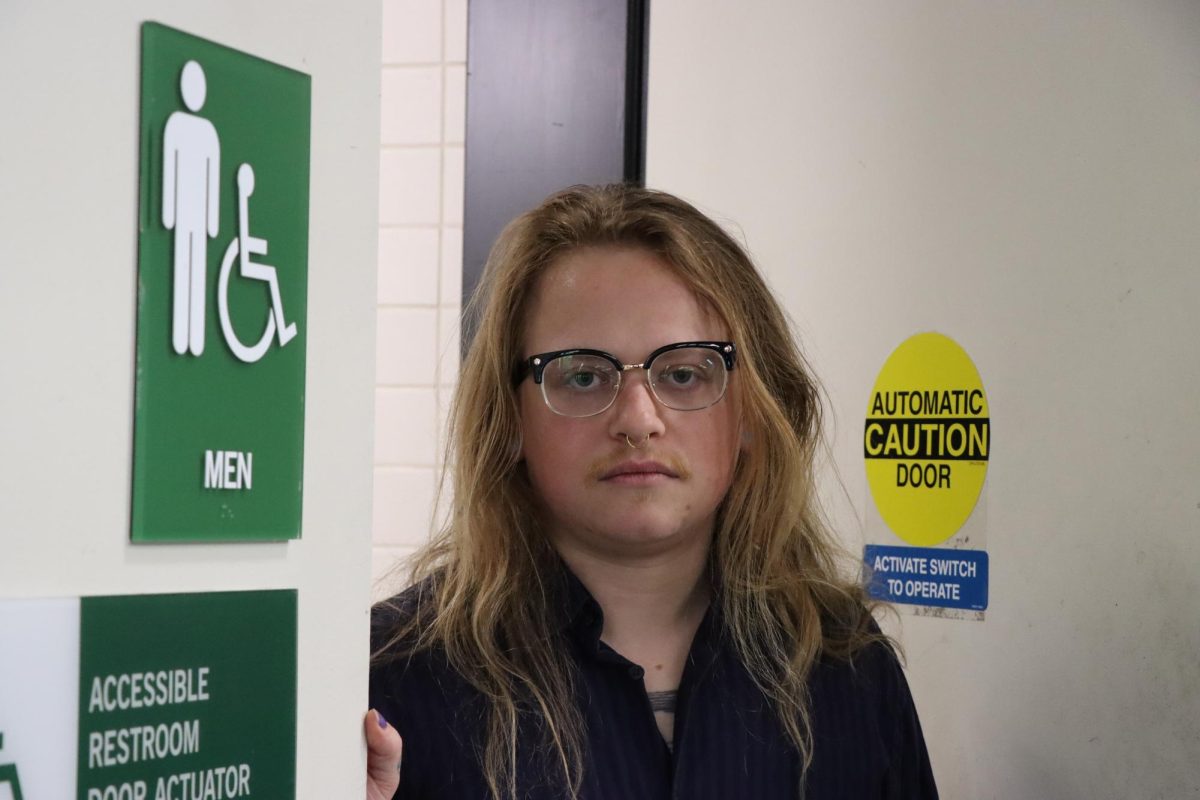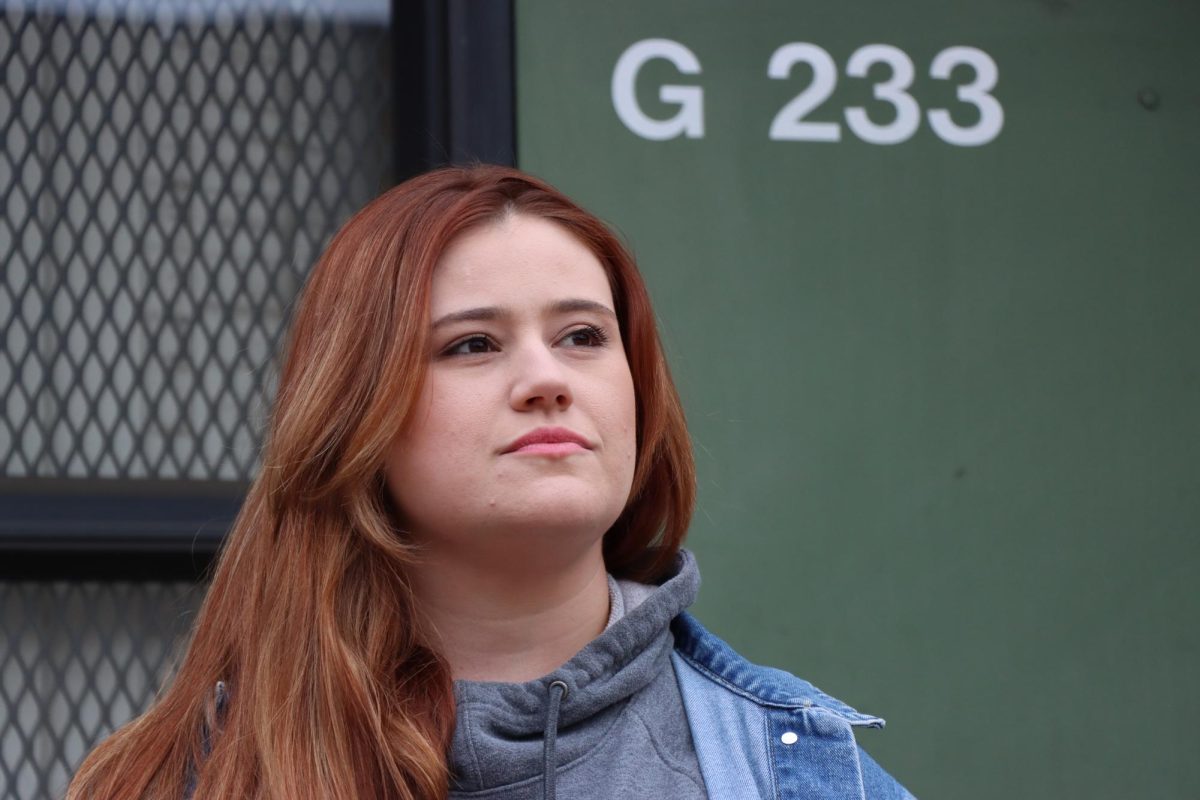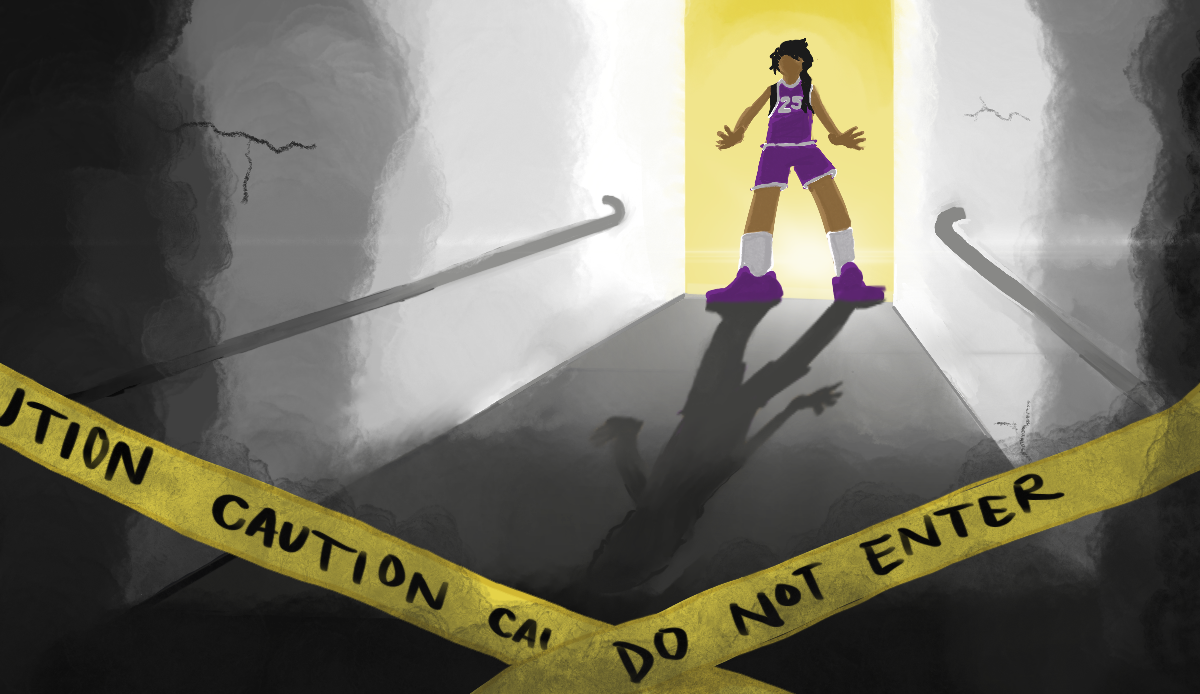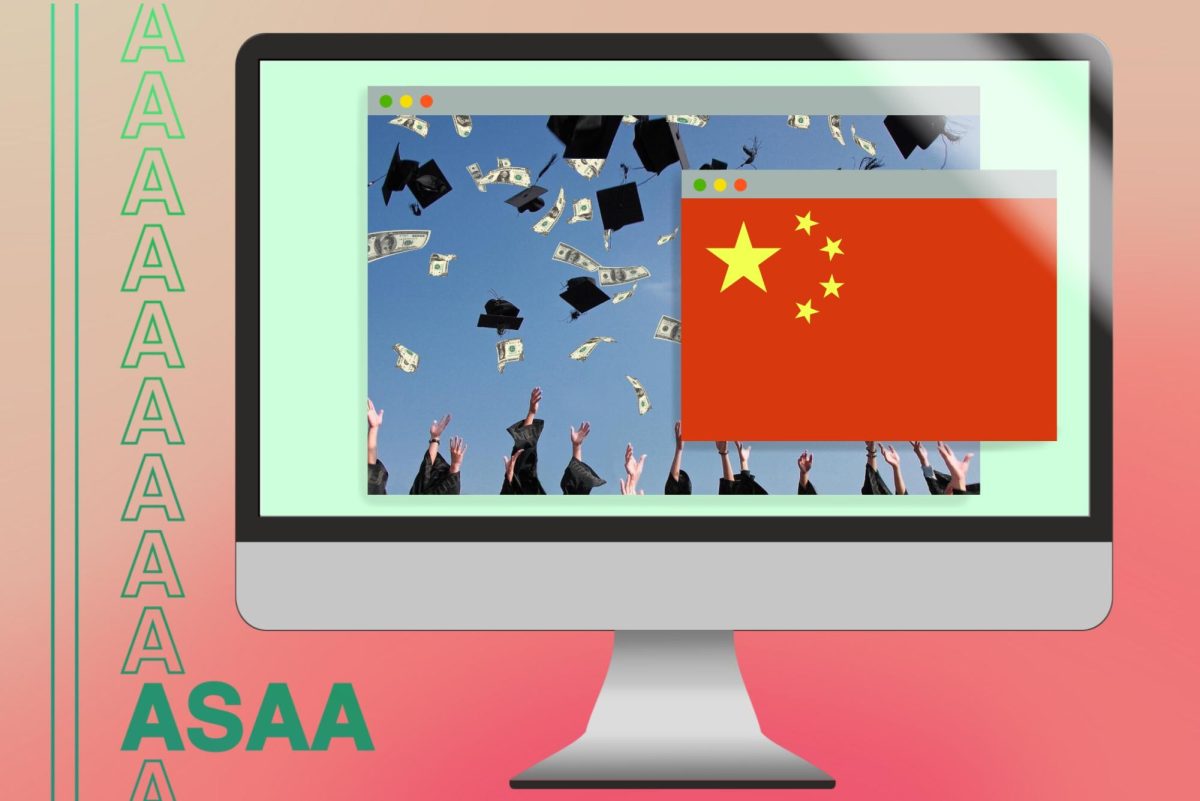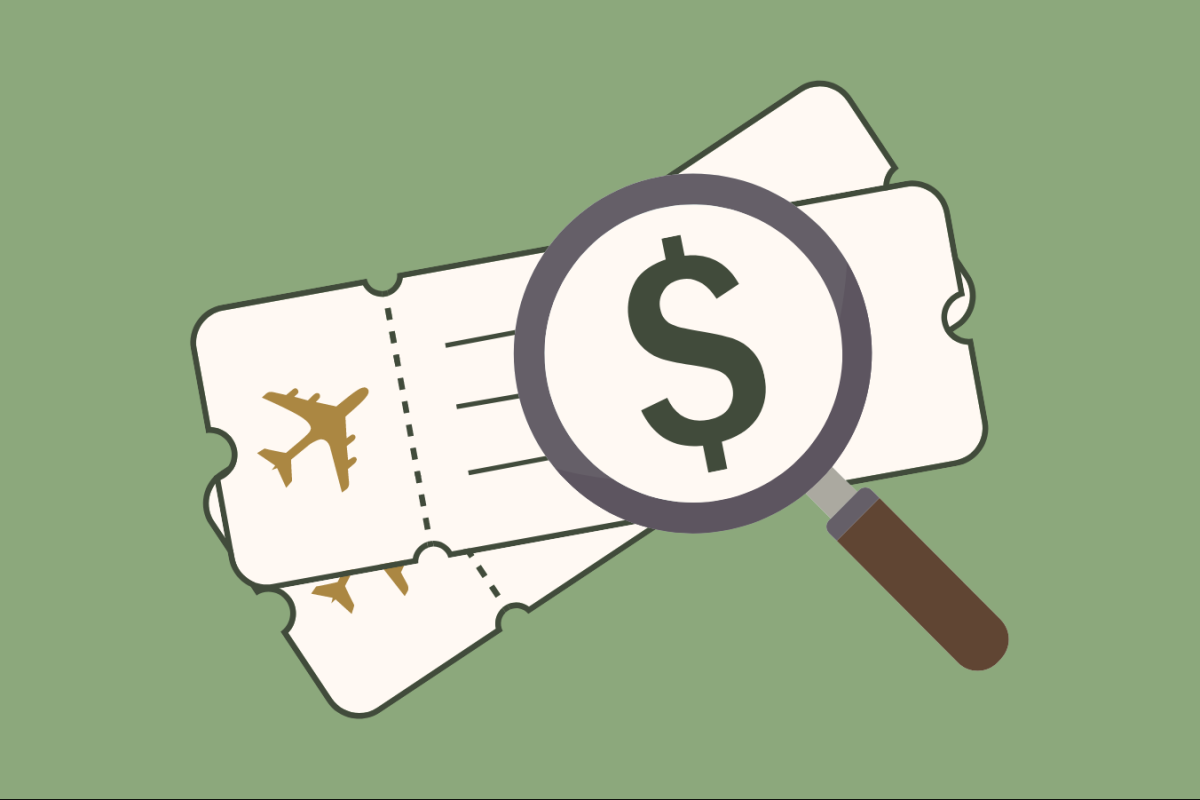
The spirit of the Black Panthers’ free food programs is alive at Laney today
By Toni Cervantes
The Golden Gate Library hosted a pop-up exhibit Feb. 10 of original Black Panther Party (BPP) memorabilia dating from the group’s origins. Billy X Jennings, the archival historian for the BPP and former assistant to Huey P. Newton, presented the event to a standing room only crowd.
The BPP is widely remembered for its militant and armed citizens patrol that monitored the brutal abuses of the Oakland Police Department. The iconic photograph of BPP founder Newton, sitting in a peacock wicker chair gripping a shotgun and an African spear, was on display at the library.
To some, the image symbolized the emergence of a black terrorist organization and the turbulent uprising of the inner city that sent shock waves throughout the halls of the FBI.
To others, it represented a black power group who were an unprecedented force for positive social change.

Bobby Seale and Newton founded the BPP at Merritt College in 1968. The group’s influence exploded on campuses and in Black communities across America, encouraging youth to voraciously challenge the power of the status quo.
“I joined the Black Panther Party through osmosis,” said Rev. Gayle Dickson, a renowned graphic artist who created some of their famous imagery. “In 1968, I was boycotting the Housewives Market in West Oakland because little Bobby Hutton had been murdered.”
Dickson said she attended both Laney and Merritt colleges because she “wanted to be where the action was.”
In 1972, she began working on the BPP newspaper, It’s About Time. “We worked 24/7,” adding that she often helped design the entire paper. “Sometimes I found myself sleeping on top of the tables.”
About Time was a siren of information to the Black community, capturing defining moments in American history. One could read narratives written from their reality and point of view rarely represented in the mainstream press.

The Black Panther Party was “arguably the most feared and dangerous movement in America,” Dickson said, but the BPP was first and foremost objective was about survival programs as a precedent to the revolution.
The other goal was getting members in the community elected to public office so their needs would be heard.
Barbara Lee, Ron Dellums, Elaine Brown are a few politicians who were supported by the party and won elections.
Jennings also spoke about the numerous contributions the Panthers made to the Black communities and the country as a whole, including the first free breakfast program in schools, prisoner education, free sickle cell testing, and senior safety services.
Many of these programs were later adopted by the government as new national social programs.
“In 1972, we gave out 10,000 bags of free groceries to people who registered to vote or who took a sickle cell anemia test. We established a record for the most people registered in one day, about 7,000–8,000,” he said.
Jennings said that Black people were beginning to recognize their right to self-determination. “The social consciousness of people in the 60’s was rising,” adding that the BPP’s influence was significant.
“You don’t have James Brown saying ‘I’m Black and I’m Proud’ or Tommy Smith and John Carlos sticking their fists up in protest at the 1968 Olympic if you don’t have no BPP,” he said.
The original members of the BPP were well-educated, including Newton, a law student. He often avoided illegal arrests by informing police of their illegal methods of detainment.
The BPP attracted many people who were synonymous with the Civil Rights Movement, and they were autonomous, Jennings said.
“It was our aunts, uncles, parents and grandparents who put these programs together. It wasn’t the government,” he said. “Because of this, the Black Panther legacy will never die.”
Toni Cervantes is a Tower Staff Writer.

